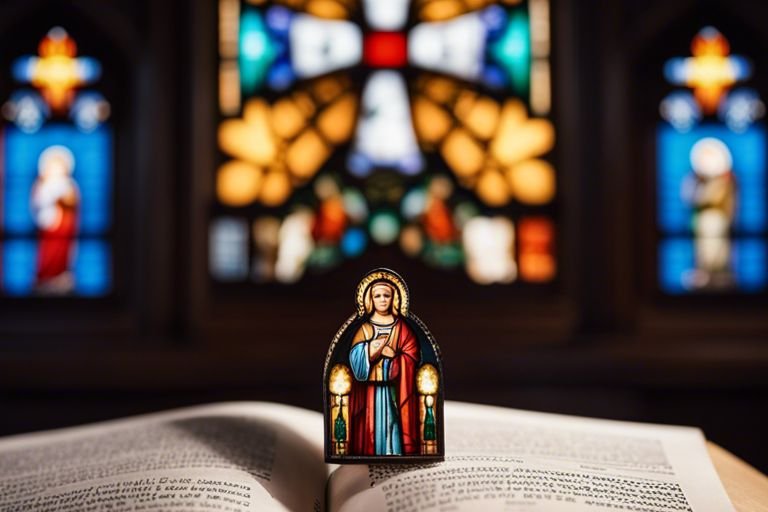Perplexed by the idea of worry dolls and their connection to Christianity? You’re not alone. In this guide, I will delve into the world of worry dolls, examining their origins, cultural significance, and the potential conflicts with Christian beliefs. From the powerful symbolism of these tiny figures to the controversy surrounding their compatibility with Christianity, I will present an in-depth analysis of their impact on religious perspectives. Whether you’re a Christian looking to understand more about worry dolls or simply curious about the intersections of cultural beliefs and religion, this guide will offer valuable insights and considerations for your own beliefs.
Key Takeaways:
- Worry dolls are a cultural tradition originating from Guatemala, designed to alleviate worry and promote better sleep by confiding worries to the dolls before going to bed.
- Worry dolls are not inherently against Christianity as they do not have any religious significance. In fact, many Christians around the world use worry dolls as a cultural practice without conflicting with their religious beliefs.
- It is important to understand the cultural context of worry dolls and how they fit within different religious perspectives. While some individuals may feel uneasy about using worry dolls due to their cultural origins, it is crucial to approach the topic with respect and understanding.
- Religious perspectives on worry dolls vary among different Christian denominations, but there is no blanket condemnation of their use. It is important for individuals to discern for themselves how worry dolls align with their personal religious beliefs.
- Ultimately, the use of worry dolls is a personal choice and can coexist with Christianity as long as it is approached with an understanding of its cultural significance and respect for differing religious perspectives.
Understanding Worry Dolls
A worry doll, also known as a trouble doll, is a tiny hand-crafted doll that originated in Guatemala. According to traditional beliefs, these dolls have the ability to absorb worries and fears from individuals who confide in them. It is a common practice for people to share their concerns with the dolls before going to bed in the hope of a peaceful night’s sleep. Worry dolls are often made from wood, wire, and colorful scraps of fabric, and are sold in sets of six or more. Each doll is very small, usually less than an inch in height, making them a convenient size to place under a pillow or carry in a pocket.
Origins and Cultural Beliefs
The tradition of worry dolls can be traced back to Mayan legend. According to the folklore, when a person has worries, they can share these concerns with the dolls. After telling the dolls about their fears and worries, they place the dolls under their pillow before going to sleep. It is believed that the worry dolls will then take away the worries during the night, allowing the person to sleep peacefully. This centuries-old tradition has been passed down through generations and remains an important aspect of Guatemalan culture today.
Role of Worry Dolls in Different Societies
While worry dolls are most commonly associated with Guatemala and Mayan culture, similar traditions can be found in other societies around the world. Many cultures have their own versions of worry dolls, each with unique practices and beliefs. In some societies, worry dolls are used as a form of therapy, allowing individuals to externalize their fears and concerns. In other cultures, the dolls are seen as symbols of hope and comfort, providing a sense of security in times of distress. Regardless of the specific cultural context, worry dolls serve as a tangible reminder that it is possible to share our burdens and find relief from our worries.
Worry Dolls and Christianity
The use of worry dolls originates from Mayan and Guatemalan cultures, where they are believed to alleviate worries and concerns by taking them away while we sleep. However, the question arises whether the use of worry dolls is compatible with Christian beliefs and practices.
Religious Perspectives on Worry Dolls
From a religious perspective, the use of worry dolls can be seen as conflicting with Christian beliefs. Christianity teaches that believers should cast all their anxieties on God and trust Him to take care of their worries. Therefore, the act of transferring worries to worry dolls may be viewed as a lack of faith in God’s ability to provide comfort and peace.
Are Worry Dolls Against Christian Beliefs?
While some Christians may see the use of worry dolls as contrary to their faith, others view them as harmless cultural artifacts that do not interfere with their belief in God. It is important to note that the Bible does not specifically address the use of worry dolls, so the interpretation of their compatibility with Christian beliefs may vary among individuals and denominations. Ultimately, it is up to each individual to discern whether the use of worry dolls aligns with their personal relationship with God.
In the exploration of worry dolls and Christianity, it is important to consider the varying interpretations and perspectives within the Christian community regarding the use of worry dolls. While some view them as conflicting with Christian beliefs, others may see them as cultural artifacts that do not threaten their faith. Ultimately, the decision to incorporate worry dolls into one’s spiritual practice is a personal matter that requires thoughtful consideration and discernment.
Exploring the Factors
After delving into the historical and cultural significance of worry dolls, it’s important to explore the various factors that influence the use of these tiny figures. First and foremost, worry dolls have been a traditional part of Guatemalan culture for centuries, passed down from generation to generation. This cultural influence can shape the beliefs and practices of individuals who incorporate worry dolls into their lives. Additionally, the belief in the ability of worry dolls to alleviate anxiety and bring peace of mind is a significant factor driving their continued use. Furthermore, the influence of various religious perspectives, including Christianity, can also impact views on the use of worry dolls. After evaluating these factors, we can gain a deeper understanding of the intersection between cultural beliefs, religious perspectives, and the use of worry dolls.
Psychological Benefits of Using Worry Dolls
Many individuals find a sense of relief and comfort in using worry dolls as a tool for expressing and addressing their anxieties. The act of sharing one’s worries with a worry doll can provide a sense of catharsis and release. By externalizing their concerns, individuals may experience a reduction in stress and an improved sense of emotional well-being. The ritual of confiding in worry dolls can also serve as a form of self-soothing, promoting a more peaceful state of mind.
Potential Risks and Drawbacks
It’s important to acknowledge that while worry dolls can offer psychological benefits, there are potential risks and drawbacks to consider. Some individuals may become overly reliant on worry dolls as a coping mechanism, which could ultimately limit their ability to seek support from other sources. Additionally, there may be a danger of attributing too much power to these inanimate objects, leading to a false sense of security. It’s essential to approach the use of worry dolls with a balanced perspective, recognizing their limitations and considering alternative methods for managing anxiety.
Are Worry Dolls Against Christianity – Exploring Cultural Beliefs and Religious Perspectives
Considering all points of view, it is evident that the use of worry dolls is not inherently against Christianity. While some individuals may hold the belief that such practices contradict Christian teachings, it is important to acknowledge the cultural significance and personal beliefs associated with the use of worry dolls. Ultimately, the interpretation of whether worry dolls are compatible with Christianity varies among individuals and religious authorities. It is crucial to approach this topic with an open mind and a respectful attitude towards diverse cultural beliefs and religious perspectives.
FAQ
Q: Are worry dolls against Christianity?
A: Worry dolls are not specifically mentioned in Christian doctrine, and there is no official stance on them within Christianity. However, some individuals or denominations may view the use of worry dolls as conflicting with Christian beliefs due to their association with folk traditions and superstitions.
Q: What is the cultural significance of worry dolls?
A: Worry dolls originate from Mayan culture in Guatemala and are believed to have the power to take away worries and bring peace. They are often used as a form of therapy or meditation to release troubling thoughts and promote mental well-being.
Q: Can Christians use worry dolls?
A: The use of worry dolls is a personal decision for Christians. Some may choose to use them as a cultural or therapeutic practice, while others may prefer to avoid them due to concerns about their origins or associations with superstition.
Q: How do worry dolls relate to religious perspectives?
A: From a religious perspective, the use of worry dolls may be seen as conflicting with monotheistic beliefs or as promoting reliance on objects rather than faith in a higher power. However, interpretations vary among individuals and religious denominations.
Q: Are worry dolls considered a form of idolatry in Christianity?
A: The view of worry dolls as a form of idolatry in Christianity is subjective and depends on individual or denominational beliefs. Some may consider any object used for comfort or meditation to be potentially idolatrous, while others may see worry dolls as harmless cultural artifacts.




